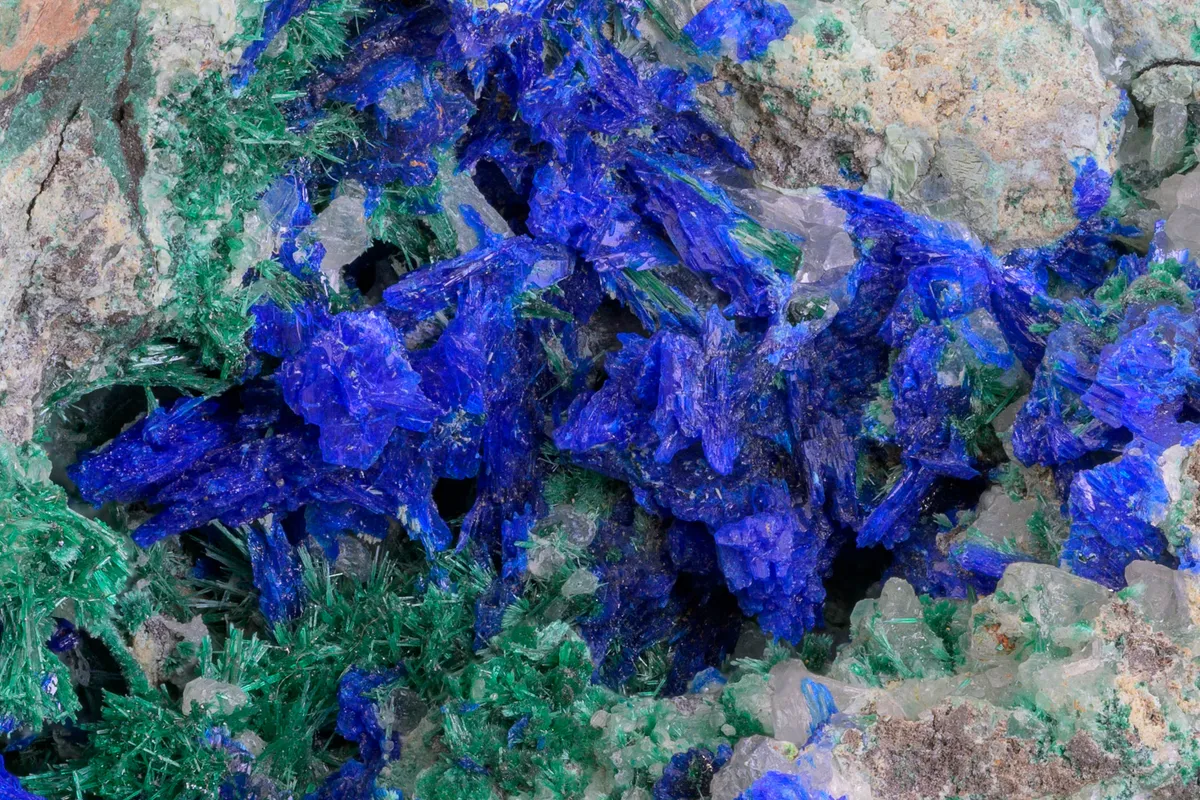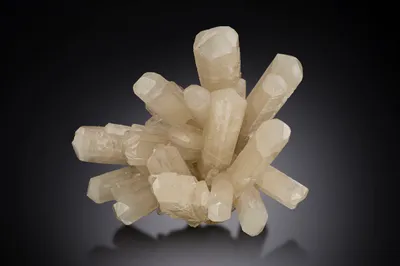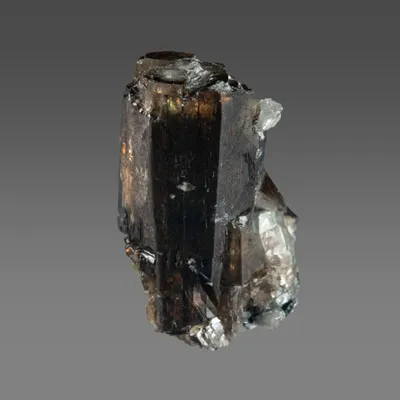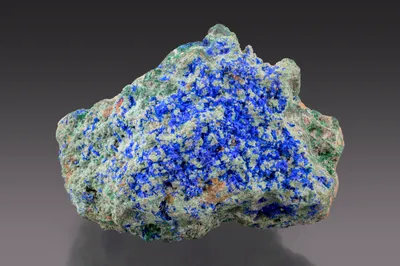
Image Credit: Malcolm Southwood
Mineral Species
Linarite
Type Locality
No
Composition
PbCu2+(SO4)(OH)2
Crystal System
Monoclinic
Status at Tsumeb
Confirmed
Abundance
Somewhat rare
Distribution
First and second oxidation zones
Paragenesis
Supergene
Entry Number
Species; TSNB213
General Notes
Linarite has been known at Tsumeb since the earliest days of mining and was one of eleven minerals listed by Schneider (1906). In describing a suite of specimens received by the Bergakadamie in Berlin, he noted that linarite "… does not seem rare" and that it is "… always associated with coarse fibrous malachite … often in cellular cavities [in the oxidised ore]".
Maucher (1908a) also noted the occurrence of linarite as a significant component of the oxidised ore, often associated with malachite, brochantite and anglesite and less commonly with caledonite.
It is interesting to note that the earliest Tsumeb specimen acquired by the Natural History Museum in London was a rich example of linarite, purchased from Maucher in 1907 (catalogue number BM.1907,1013); its vintage dates it unequivocally to the uppermost part of the first oxidation zone.
In the upper parts of the first oxidation zone, including the outcrop, linarite commonly occurred in a matrix of granular cerussite, sometimes with brochantite, malachite and (less commonly) caledonite. Linarite is commonly encountered as a partial coating on, or as near-surface inclusions in, cerussite crystals.
Klein (1938) commented on the occurrence of linarite, usually as coatings but sometimes as crystals between surface and a depth of 250 m (9 Level). It is interesting that Klein’s handwritten catalogue (Klein family archive; undated and unpublished) lists several specimens in which linarite is noted, but always as an associated species. The listings are useful because they provide an indication of linarite associations at different levels of the first oxidation zone:
- Open pit: "Malachit auf Linarit", (Klein # 511 and 537).
- 5 Level West: "Cerussite auf Linarit", (Klein # 269).
- 8 Level: "Zinkspat, blaugrün auf Linarit" [blue-green smithsonite on linarite], (Klein # 365).
- 9 Level West: "Cerussit, mit Linarit", (Klein # 198).
Strunz et al. (1958a) and Strunz and Tennyson (1967) included linarite in their lists of first oxidation zone minerals, but not in their inventories of second oxidation zone species.
Bartelke (1976) considered linarite common at Tsumeb, but easily overlooked as it often occurs as small crystals. He noted that linarite crystals are typically elongated on the b-axis, sometimes as idiomorphic individuals and sometimes as tufts or aggregates, often with cerussite or on tennantite, and almost always with brochantite.
Pinch and Wilson (1977) noted that linarite "Forms deep blue crystals rarely exceeding a few mm in size. The crystals are of a bladed habit and occur with cerussite, tennantite, brochantite and sometimes caledonite". They also commented that linarite can be easily overlooked "… because of its small size and similarity in color and habit to azurite".
Keller (1977a) included linarite in a paragenetic sequence of (mainly) sulphate minerals which he believed formed under acidic conditions. His sequence "II/3" is as follows:
II/3: primary sulphides >> brochantite + posnjakite + malachite >> linarite >> serpierite
Keller (1984) added devilline to this sequence (as the youngest mineral) and noted that the principal occurrence for this paragenesis is on the surface of tennantite pseudomorphs after enargite that were found in the second oxidation zone (Paar 1973).
Lombaard et al. (1986) listed linarite as "sparse" at Tsumeb, occurring widely but in small amounts.
Gebhard (1999) noted that the "Green Hill" outcrop was rich in linarite with crystals to 20 mm, sometimes associated with brochantite and caledonite. He mentioned a 6 cm "blue phosgenite" specimen, in which phosgenite has altered to cerussite and in turn been overgrown by linarite.
Associated Minerals
anglesite; aragonite; arsentsumebite; brochantite; caledonite; cerussite; connellite; devilline; enargite; kasolite; langite; malachite; matlockite (?); mimetite; munakataite; namuwite; olsacherite; phosgenite; posnjakite; rosasite; schulenbergite; serpierite; tennantite-(Zn)








